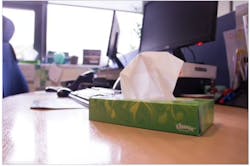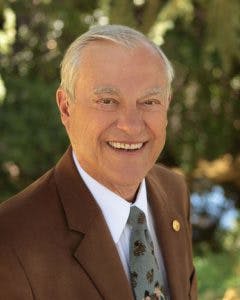It’s not every day that I get a semi-urgent phone call from an engineer offering me a compelling story that he says is time-sensitive and needs to reach our readers as soon as possible.
But that is just the message that I received in November from ASHRAE Fellow C. Mike Scofield, who urged me to review a technical paper that he and some West Coast colleagues at research universities had put together, specifically for this upcoming cold and flu season. Intrigued, I definitely wanted to help, especially considering the public health aspect.
But I also didn’t want to cost Mr. Scofield the opportunity to have this work published in a peer-reviewed scholarly journal, which understandably requires longer lead times for publication. After I expressed that concern to him, he then consulted with his co-authors and eventually we all agreed to publish a revised, summary version of the paper, which you see before you now as the cover story for this issue. (In the interest of time and broader disclosure, we also published the story online in mid-January.)
Why the urgency?
Well, as Scofield writes, “In cold, dry, Northern climates, Indoor Environmental Quality (IEQ) can be destroyed by over ventilation with outdoor air and artificially high Air Change Rates (ACR) in winter.”
That is why so many of us in offices and classrooms for several hours per day are more susceptible to catching the Flu when our indoor environments drop below 40% Relative Humidity (RH). Airborne pathogens that spread the virus remain buoyant and viable for longer periods in such “human breathing zones” indoors, explains Scofield, an expert on evaporative cooling and a professional engineer since 1960. He is now president of the North Bay Office of Conservation Mechanical Systems Inc. in Sebastopol CA.
“Artificially high ACR can cause turbulence in the human breathing zone, which spreads the pathogen further from the human host,” he writes. “For reasons not yet fully understood, the airborne pathogen becomes more virulent in dry indoor conditions.”
Therefore, he says, HVAC design professionals need to use Variable Air Volume (VAV) systems to support IEQ goals and promote occupant health.
“For many years after its introduction in the 1970s, VAV and IEQ have been two mutually exclusive acronyms,” Scofield writes. “Proper maintenance of outdoor air ventilation rates and indoor air humidity were non-existent, (and) overcooling was endemic.”
But today, engineers now know that “Adiabatic Cooling and Humidification coupled to Heat Recovery offers a cost effective solution” to the problem, and at least one preventive cure to the common cold.
So, I’d like to thank Mr. Scofield for making us aware of his article and I urge all of you to read the rest of his detailed summary.
Which brings me back to the rest of you. I have been in touch with most of HPAC’s editorial advisory board in the last few weeks and I am now feeling the need to re-commit to even more practical stories in 2020, focused on hands-on answers to practical problems in your practice.
With that in mind, if you also have a tale to tell, I urge you to contact me as Mr. Scofield did, and to pitch me your idea. Who knows? Your story may even end up on our cover!
Please note all the new e-mail addresses for contacting us. I can be reached at [email protected].
About the Author
Rob McManamy
Editor in Chief
An industry reporter and editor since 1987, McManamy joined HPAC Engineering in September 2017, after three years with BuiltWorlds.com, a Chicago-based media startup focused on tech innovation in the built environment. He has been covering design and construction issues for more than 30 years, having started at Engineering News-Record (ENR) in New York, before becoming its Midwest Bureau Chief in 1990. In 1998, McManamy was named Editor-in-Chief of Design-Build magazine, where he served for four years. He subsequently worked as an editor and freelance writer for Building Design + Construction and Public Works magazines.
A native of Bronx, NY, he is a graduate of both the University of Virginia, and The John Marshall Law School in Chicago.
Contact him at [email protected].

